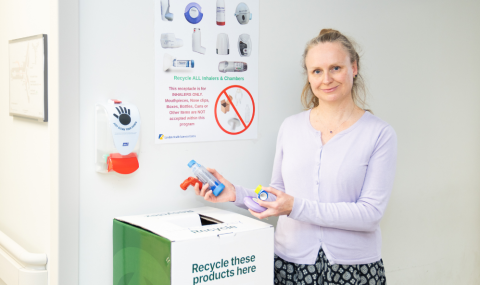Spring is almost here and with the better weather comes the opportunity to increase physical activity levels in the great outdoors. Walking is an excellent activity choice for almost everybody, and is one of the most highly recommended physical activities for people with bleeding disorders. It is an activity choice that is easy, convenient, inexpensive, and something that most family members can do together.
To achieve cardiovascular fitness, it is recommended that physical activity be undertaken at least three times weekly, for a period of 30 to 45 minutes. You need to get your heart rate elevated to achieve cardiovascular fitness. Your own perception of how hard you are working is an extremely reliable indicator of how hard your heart is working when you exercise. Walking can be an extremely effective form of cardiovascular exercise if you walk hard enough to get your heart rate elevated.
There are many benefits to undertaking a walking program. As walking is a weight bearing activity, it helps to increase bone density which in turn helps to prevent osteoporosis. Walking can also help to maintain a healthy body weight, which will also help decrease strain on weight bearing joints. Regular physical activity can also help to alleviate stress.
You can vary the intensity of a walking program in three ways: by increasing frequency, duration and/or intensity. Frequency describes how often you undertake an activity. It is recommended that most people try to undertake a period of physical activity at least three times per week. As your fitness level improves, you can increase the frequency of a walking program by increasing the number of times you walk each week. Unlike running, walking is an activity, which can be done every day without risk of injury.
Duration describes how long you undertake an activity. To achieve a cardiovascular training effect, it is recommended that most people try to undertake a period of physical activity for approximately thirty minutes. However, even twenty minutes will achieve some cardio conditioning. As your fitness level improves, you can increase the amount of time you spend on each walk, aiming for 45 to 60 minutes per walk.
Intensity describes how hard you work at a physical activity. Your own perception of how hard you are working is a reliable indicator of whether or not you are achieving a cardio training effect. If you are just beginning a walking program, walking at a pace of 3.5 miles per hour should feel like a comfortable strolling pace. As your fitness level improves, you can increase your pace, aiming for a speed of 4.0 miles per hour, which is considered a fitness walking pace. You can use a speedometer to measure your pace if you are walking outside, or the speed controls on a treadmill if you are walking inside.
However, you don’t really need any technology – just walk at the fastest pace you can comfortably manage, and this will increase as your fitness level increases.
A beginner walking program will have you walking for 30 minutes, three times per week, at a speed of 3.5 miles per hour. As your endurance and strength increase, you will be able to increase the duration, frequency, and/or intensity to make your walking program more challenging. Walking is easy, safe, economical, and a great way to enjoy the outdoors while improving your overall health and fitness levels.


